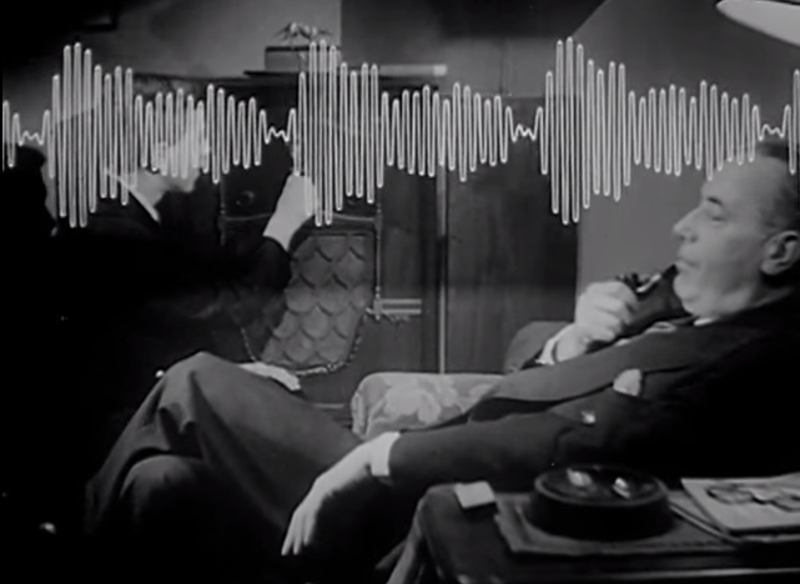Many of us still tune in to terrestrial radio for one reason or another, be it baseball games, talk radio, or classic rock. But do you know how the sound is transmitted to your receiver? This week, our spotlight shines upon a short film produced by KYW Radio that serves as a cheerful introduction to the mysteries of amplitude modulation (AM) radio transmission as they were in 1940.
Sound vibrations enter a microphone and are converted to electrical current, or an audio waveform. The wave is amplified and sent several miles away to the transmitting station. During this trip, the signal loses power and so is amplified at the transmitting station in several stages. This audio wave can’t be transmitted by itself, though; it needs to catch a ride on a high-frequency carrier wave. This wave is generated on-site with a huge crystal oscillator, then subjected to its own series of amplifications prior to broadcast.
The final step is the amplitude modulation itself. Here, the changing amplitude of the original audio wave is used to modulate that of the high-frequency carrier wave. Now the signal is ready to be sent to the tower. Any receiver tuned in to the carrier frequency and in range of the signal will capture the carrier wave. Within the reciever, these currents are converted back to the vibrations that our ears know and love.
http://www.youtube.com/watch?v=0NHGZy665Ik
Retrotechtacular is a weekly column featuring hacks, technology, and kitsch from ages of yore. Help keep it fresh by sending in your ideas for future installments.

















I have known how this works for decades, but it never ceases to amaze me that it does work! The idea that a person’s voice can be transformed into milivolts of electricity, them amplified, modulated, broadcast, de-modulated, and amplified one more time and still sound very much unchanged is truly amazing.
Agreed on all points. Radio is a fascinating subject, and a very fun hobby.
Yes indeed! It’s my primary job/life’s work and it still amazes me every day… Absolutely incredible.
Day after I was 16 (1956) I started works as “Transmitter Engineer” at WELI, New Haven, Connecticut.
100 % of the electronics was vacuum tubes. 6J5’s, 6SN7’s, 807’s 828’s, 813’s 833As… Tec.
Regards, Terry King
…In The Woods in Vermont, USA
terry@terryking.us
The original internet, been surfin’ globally since the late ’50’s.
It’s amazing how large the equipment was back then compared to what we have available to us now. That’s not to say that broadcast equipment isn’t still quite large, but hobbyist level (amateur radio, to be specific) transceivers these days can be extremely small indeed.
When I was a kid, I used to lie awake, tuning the old tube-type AM radio to see what I could hear. I was surprised that I could hear stations a good distance away from me at night. Then, I discovered short-wave radio. And Sporadic-E one summer afternoon at college, when I picked up Channel 3 from Chatenooga, TN in Amherst, MA
Yeah…radio is fun.
+1 for the RUSH song title Kristina. Great Retrotechtacular!
Anyone who found this interesting and has never built a radio receiver before should try building a “Crystal Set” receiver.
These are easy to make and don’t even need batteries – as they run solely on the energy present in the received signal.
It’s very satisfying to hear your local AM station on a radio you have constructed yourself.
Our only receivable local AM station is tainted with HD noise, the other 2 always bled badly at 30 kHz apart on a crystal set.
Do it before AM’s certain demise. Crystal detection on the slope will work for FM. At VHF it takes a cavity resonator to pull it off, or some careful construction of the small coil and picofarad cap.
Interesting. I would have thought the carrier wave and audio signal would have been combined much earlier than after the final amplification.